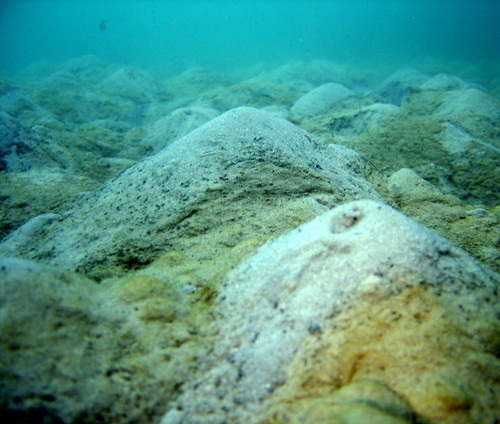burna
Contributor
I haven't posted in this part of the forum before so I'll follow Rick's suggestions to help with a possible ID.

(1) How big is the critter?
Roughly 15cm long and 10 cm diameter. It had a hole in the point on the right hand side.
(2) Where in the world is the critter?
Rye, Victoria, Australia. (Summer, water temp 19C)
(3) What sort of habitat (reef, wreck, sand, rubble etc) is the critter in?
Dug it out of the sand. I decided to dig up one of these little holes the pump sand out like a volcano to see what was down there.

I tried digging up another one but couldn't find the same weird thing, so I don't know if it was this that was pumping out the sand.
(4) How deep is the critter?
About 4 metres.
(5) What time of day (or night) did you see the critter?
It was daytime, but buried under about 30cm of sand.
(6) Any observed behavior of the critter...
None.
I have seen these very long whitish coloured flat worms with dark coloured spots coming out of similar holes in the sand and wondered if this was what they lived in??
Anyone have any ideas?
Cheers.

(1) How big is the critter?
Roughly 15cm long and 10 cm diameter. It had a hole in the point on the right hand side.
(2) Where in the world is the critter?
Rye, Victoria, Australia. (Summer, water temp 19C)
(3) What sort of habitat (reef, wreck, sand, rubble etc) is the critter in?
Dug it out of the sand. I decided to dig up one of these little holes the pump sand out like a volcano to see what was down there.

I tried digging up another one but couldn't find the same weird thing, so I don't know if it was this that was pumping out the sand.
(4) How deep is the critter?
About 4 metres.
(5) What time of day (or night) did you see the critter?
It was daytime, but buried under about 30cm of sand.
(6) Any observed behavior of the critter...
None.
I have seen these very long whitish coloured flat worms with dark coloured spots coming out of similar holes in the sand and wondered if this was what they lived in??
Anyone have any ideas?
Cheers.



